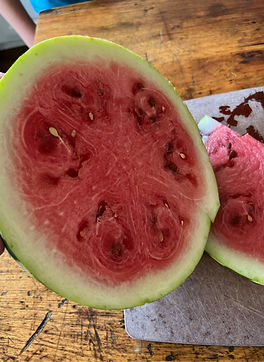Daily Choices, Lasting Impact

Harvest
Harvest season reveals the true measure of garden planning and execution. This is where months of soil preparation, strategic planting, and consistent care translate into measurable food production, preservation opportunities, and family food security.
Harvest success depends on decisions made months earlier. Variety selection determines harvest timing. Plant spacing affects yield quality. Succession planting creates extended harvest windows. Preservation planning ensures nothing goes to waste during peak production periods.
Harvest: Results From Previous Investments
SEASONAL HARVEST CALENDAR
SPRING HARVEST (March-May)
-
Peas: March harvest from winter plantings
-
Strawberries: April-May peak season
-
Early Tomatoes: Late May first harvest
-
Herbs: Fresh herb production begins
-
Cut Flowers: Spring varieties for arrangements
SUMMER PEAK (June-August)
-
Tomatoes: Peak production June-August
-
Peppers: Continuous harvest June-August
-
Berries: Blueberries May-July, Blackberries June-July
-
Beans: Succession harvests May-September
-
Herbs: Peak essential oil production
-
Tree Fruits: Peaches May-August, early pears July
FALL TRANSITION (September-November)
-
Sweet Potatoes: September harvest and curing
-
Fall Vegetables: Second season brussels sprouts
-
Late Berries: Second raspberry crop September
-
Grapes: August-September harvest
-
Storage Crops: Onions, garlic curing and storage
WINTER PREPARATION (December-February)
-
Citrus: Peak season for established trees
-
Storage: Preserved foods from summer harvest
-
Planning: Seed ordering and garden planning
-
Maintenance: Pruning and infrastructure work
PRESERVATION SYSTEMS
FRESH STORAGE
-
Root Vegetables: Proper curing and storage conditions
-
Alliums: Garlic and onion braiding, mesh bag storage
-
Tree Fruits: Controlled atmosphere storage methods
PROCESSED PRESERVATION
-
Canning: Tomato products, fruit preserves, pickled vegetables
-
Freezing: Berry collection, blanched vegetables, herb preservation
-
Dehydration: Herb drying, fruit leather, vegetable chips
-
Fermentation: Sauerkraut, pickles, traditional preservation
VALUE-ADDED PRODUCTS
-
Essential Oils: Rosemary, oregano, thyme, basil extraction
-
Herbal Preparations: Teas, tinctures, culinary blends
Specialty Foods: Unique preserves, flavored salts, herb butters